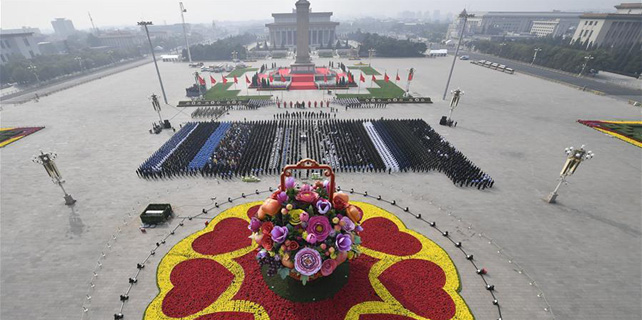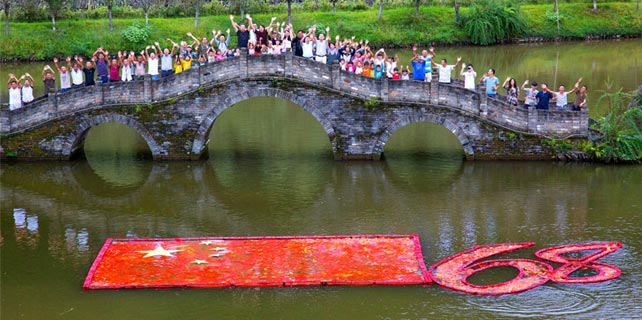Discovering Hainan's tropical interior
 |
|
Bruce making friends in Tongzha 1993. [Photo by Bruce Connolly/chinadaily.com.cn] |
On tree-covered slopes above the river rose the prominent buildings of Hainan Ethnic Museum, opened in 1986 and Qiongzhou College where later I would meet local ethnic students dancing with long bamboo poles. The Li and Miao communities live in and around Tongzha - on Sundays many would come in from surrounding villages often wearing traditional costume.
Restaurants were not set up for western visitors so it was dining like the locals, usually pointing to what someone had on their table or showing food names in guidebooks - books which often became curiosities as I waited for dinner! Sometimes easier to say 'dangchaofan' (egg fried rice) - always a winner! Tongzha is also famed for its green 'Wuzhishan Lucha' - tea with a healthy reputation.
It was the countryside which most appealed to me - my first real opportunity to experience a combination of rice fields and tropical forest. Each day would be a learning experience of the local ecology, natural environment and rural lifestyles. Much exploration was simply a combination of curiosity and common sense!
Near my hotel I spotted a road heading along a forested valley. It led initially to a hotel but beyond the ground rose steeply towards a waterfall. A narrow earthen track led through the foliage where sometimes I had to bend down to get through but it took me to a landscape which having studied biogeography I really appreciated - an area of tropical forest ecosystem. Trees of various height reached skywards for sunlight, creating a canopy so filling lower sections of the forest with only gloomy twilight. Stopping, staying very still I listened to the sounds - the almost chain-saw screech of insects; bird calls high in the verdure; the occasional crash of a decayed tree; of flowing water; of animal sounds from the branches. Monkeys? Care was needed because this was also a habitat for snakes. A man, dressed in blue heavy cotton descended the track, obviously surprised at meeting me. We shared greetings. A large machete was held by his belt - in case of snakes? Higher, the track emerged from the forest to several clearings producing bananas, mangos, melons, vegetables. Trees had been removed by centuries old 'slash and burn' techniques with new tree growth emerging when farming was abandoned. Across a stream, wooden stockades protected an earthen walled thatched house - from its roof protruded a television aerial! A women quietly tended her vegetable plots. Beyond lay Taiping Lake which fed the river I had initially followed.
Gongye Road led southwest from Tongzha through mostly low-lying rural countryside. Tall coconut palms rose above compact settlements again of adobe-walled thatched dwellings. Larger buildings acted as communal meeting halls. The layout of these villages and their surrounds fascinating. Fences enclosed the compounds beyond which were small banana groves, vegetable plots and fishponds. Chickens ran about while small black and white pigs wallowed in mud holes. Young people either looked after buffaloes or played in the waters of the irrigation channels.
















